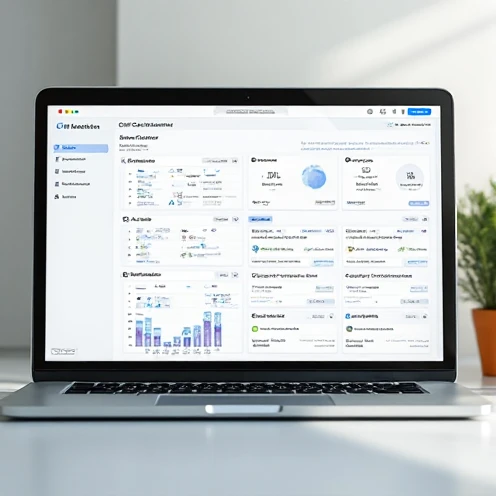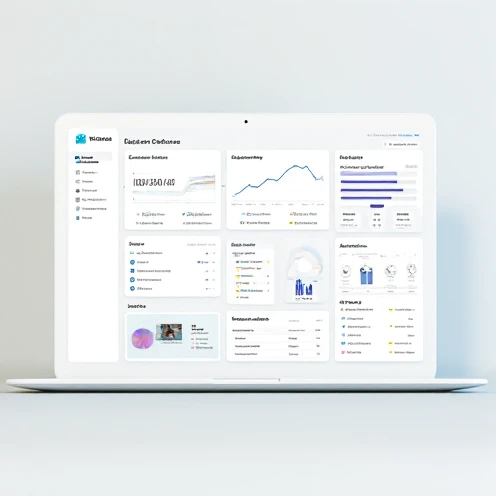Customer Relationship Management (CRM) is one of the most vital tools for businesses today. It allows organizations to track customer interactions, manage leads, and build stronger relationships. However, to achieve long-term success, CRM alone is not enough. This is where Partner Resource Management (PRM) comes into play.
PRM extends the power of CRM by focusing on partnerships. It ensures that distributors, resellers, and strategic allies get the resources they need to perform better. By combining CRM and PRM, businesses create a unified ecosystem where both customers and partners thrive. This integration not only enhances efficiency but also ensures sustainable growth in highly competitive markets.
Iklan Google AdSense
Why Partner Resource Management Complements CRM
PRM is more than just a software extension. It transforms how companies collaborate with their partners. Instead of treating partners as separate entities, PRM positions them as key players within the CRM ecosystem.
This alignment results in stronger engagement, better communication, and more consistent sales processes. When partners and businesses share the same platform, opportunities for collaboration grow exponentially.
Strengthening Partner Resource Management
Strong relationships are the foundation of business growth. With PRM integrated into CRM, companies can provide partners with training, resources, and insights that build trust and loyalty.
Over time, these efforts create long-lasting collaborations. Partners become motivated to deliver results because they feel supported and valued, rather than left on their own.
Partner Resource Management: Centralizing Information for Efficiency
PRM within CRM ensures that all partner-related data is stored in one place. From sales reports and marketing assets to training materials and support tickets, everything is accessible in real time.
This eliminates duplication of work, reduces confusion, and saves time for both partners and the business. A centralized hub guarantees that every partner has the latest information to represent the brand effectively.
Boosting Sales Performance
A key role of partners is to drive sales. By giving them access to PRM tools, companies help partners close deals faster. Features like automated lead distribution, sales dashboards, and performance tracking enhance decision-making.
As a result, businesses gain a clearer view of the partner pipeline. This transparency not only increases sales efficiency but also strengthens forecasting accuracy.
Key Benefits of Partner Resource Management
The benefits of PRM integration into CRM go beyond efficiency. It fosters collaboration, ensures transparency, and aligns strategies between businesses and their networks.
When PRM is applied strategically, organizations enjoy smoother operations and stronger partnerships that translate directly into revenue growth.
Better Collaboration Across Networks
Partners succeed when they have easy access to resources. With PRM, training modules, marketing campaigns, and technical support are available in one platform.
This streamlined access helps partners focus on selling and building relationships instead of struggling with scattered tools. As collaboration grows, productivity rises on both sides.
Increasing Partner Resource Management
Engagement drives results. PRM provides gamification features, leaderboards, and incentive programs that encourage partners to stay active and committed.
This higher level of involvement results in improved loyalty and better retention rates. Partners remain motivated to hit their targets because they see the benefits of their performance.
Enhancing Transparency and Trust
Trust is essential in any business relationship. With PRM, companies and partners share access to analytics and progress reports in real time.
Such transparency ensures that both sides align their strategies effectively. It also helps identify gaps early, allowing businesses to resolve issues before they escalate.
Best Practices for Successful PRM Implementation
To maximize the value of PRM in CRM, businesses need to implement it strategically. Technology alone is not enough—clear planning and execution are vital.
Following best practices ensures that organizations get the most out of their investment and that partners feel fully supported.
Align PRM with Clear Business Goals
Every business should start with defined objectives. Whether the goal is to expand into new markets or to strengthen existing partnerships, aligning PRM with these goals ensures measurable success.
This approach allows businesses to evaluate the effectiveness of PRM over time and refine their strategies accordingly.
Provide Continuous Training and Support
Training is essential for empowering partners. Companies that offer structured onboarding, certifications, and ongoing learning opportunities see better results from their networks.
When partners feel confident using the system, they can dedicate their energy to driving sales and building customer trust.
Encourage Open Communication
PRM should be a two-way channel. Feedback from partners is crucial to improving processes and refining strategies.
By listening to partners and addressing their concerns, companies create stronger, more collaborative relationships. This culture of communication builds long-term trust.
The Future of PRM in CRM
As digital transformation accelerates, PRM will continue to evolve. Emerging technologies like artificial intelligence, automation, and predictive analytics will redefine how businesses work with partners.
These tools will not only increase efficiency but also allow companies to personalize the partner experience on a much larger scale.
Leveraging Artificial Intelligence in PRM
AI will play a significant role in shaping the future of PRM. By analyzing partner performance, predicting outcomes, and automating lead assignments, AI will help businesses make smarter decisions.
This will enable companies to identify high-performing partners quickly and ensure that resources are allocated effectively.
Expanding Partner Ecosystems Globally
Global expansion requires scalable systems. PRM integrated with CRM can handle thousands of partners across multiple countries, languages, and regulations.
This scalability ensures that businesses remain consistent while adapting to regional needs. A global partner strategy supported by PRM allows organizations to grow confidently in international markets.
Iklan Google AdSense


